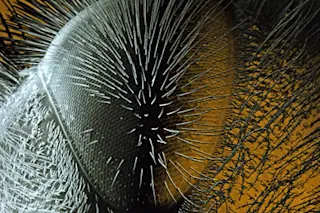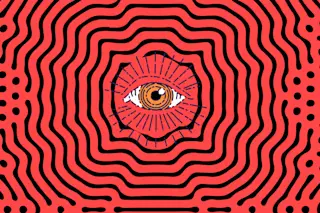Answer: The Eye of a Honeybee
Each of a honeybee's two compound eyes comprise a complex network of 6,000 hexagonal units for capturing light. The eyes are attuned to rapid movement—useful for keeping up with a speedy queen during her mating flight—and geometrical patterns. Bees tend to prefer radial, symmetrical arrangements typical of many flowers. Honeybees can also respond to a wide range of colors. They cannot perceive the color red, but they can see ultraviolet light. UV patterns on flower petals, while invisible to humans, attract bees and may help them distinguish between plant species.















